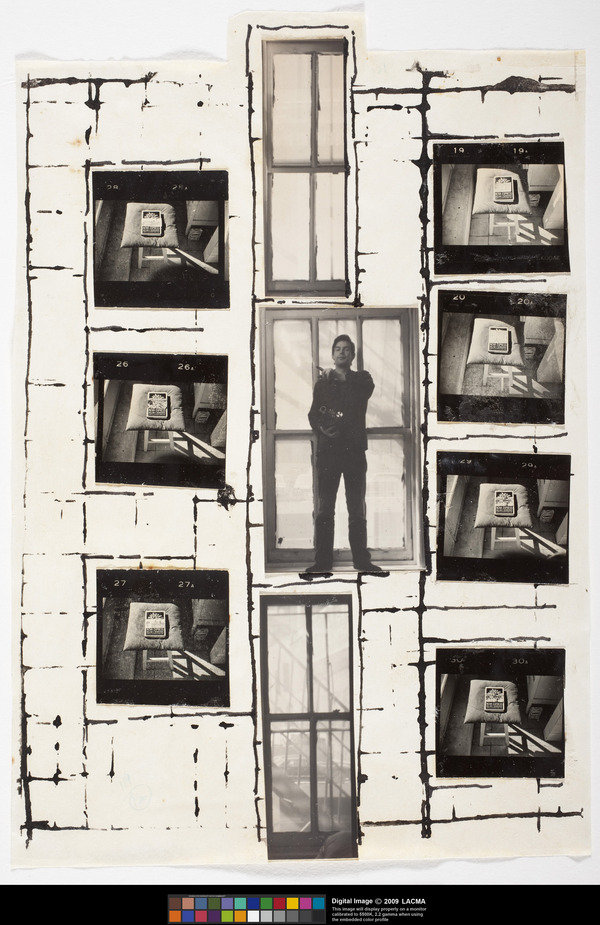William Seward Burroughs
dal 12/6/2012 al 20/10/2012
Segnalato da
12/6/2012
William Seward Burroughs
Kunsthalle Wien, Wien
Cut-ups, Cut-ins, Cut- outs. The exhibition brings together a unique collection from Burroughs' body of work including writing, soundworks, painting, photography, film and video. Particular emphasis is on the collage and cut-up techniques used by Burroughs as an important and influential part of his artistic language and legacy.

Curated by Colin Fallows and Synne Genzmer
He’s up there with the Pope. Patti Smith
The Kunsthalle Vienna is organizing a major exhibition of the American writer and artist William S. Burroughs. This
special exhibition will bring together a unique collection from Burroughs’ vibrant and experimental body of work
including writing, soundworks, painting, photography, film and video.
William Seward Burroughs (1914–1997) was born in St. Louis, Missouri. He studied at Harvard University where he
graduated in 1936 and briefly attended medical school in Vienna, and later the Harvard graduate school of
anthropology. In the 1940s he met a group from Columbia University that included Jack Kerouac and Allen
Ginsberg. Together with other figures such as Gregory Corso and Lawrence Ferlinghetti, this group is recognised as
the core of the Beat movement. He moved to Mexico City in 1947 and, apart from a few brief periods, lived abroad,
in Tangier, Paris and London, until 1974. Naked Lunch was published in Paris 1959 and established him as a major
literary figure. He made his first cut-up tapes and collages in 1960 and became a well-known figure in the
underground scene of the 1960s and 1970s.
The exhibition will represent a themed selection of Burroughs’ work in a variety of media. It ranges from cut-up
soundworks, visual collages and abstract shotgun paintings to rare books, documentary films, many rare
photographs and ephemera. William Burroughs’ work is hard to define as an artist and he offers numerous ways to
read and understand his large body of creative work. Particular emphasis is on the collage and cut-up techniques
used by Burroughs as an important and influential part of his artistic language and legacy. His early collage
experiments and the possibilities they imply have had a wide-ranging impact on the use of tape-collage and lyric
forms by artists such as The Beatles, Frank Zappa, Lou Reed, David Bowie, Brian Eno, Patti Smith, Laurie Anderson,
and Sonic Youth among many others as well as the technique of digital sampling. Burroughs opened up new
methods of writing and creating soundworks inviting a variety of possibilities for future artists. He was central to the
Beats with their free-thinking redefinition of the American way of life and made cut-up tapes and audio assemblages
before multi-track, sound collage became a veritable mode of artistic expression. The exhibition will showcase many
works that have rarely been exhibited and aims to offer new insights into a layered, complex, artistic process and
mind.
A catalogue will be published, both in German and English and will include essays by well known, international
cultural historians like Barry Miles and Jon Savage including an in-depth interview with Barry Miles by Colin Fallows.
Exhibition Catalogue Ed. KUNSTHALLE wien, Colin Fallows, Synne Genzmer; with texts by Colin Fallows,
Synne Genzmer, Barry Miles, Jon Savage as well as the first and the last interview with William S. Burroughs
conducted by Allen Ginsberg and Lee Ranaldo respectively;
app. 288 pages; app. 160 colour images; German/English; Verlag für moderne Kunst Nürnberg
Image: William S. Burroughs, Brion Gysin,Untitled (p. 130), circa 1965, Los Angeles County Museum © Estate of William S. Burroughs
Information and photographic material: Katharina Murschetz, KUNSTHALLE wien, office: Museumsplatz 1,
A-1070 Vienna, phone: +43-1-521 89-1221, fax: +43-1-521 89-1217, e-mail: presse@kunsthallewien.at
Press conference:Wednesday, June 13, 2012, 10 a.m.
Opening Thursday, June 14, 2012, 7 p.m.
Kunsthalle Wien
Museumsplatz 1, A-1070 Vienna
Daily 10 a.m. – 7 p.m., Thurs 10 a.m. – 9 p.m.



